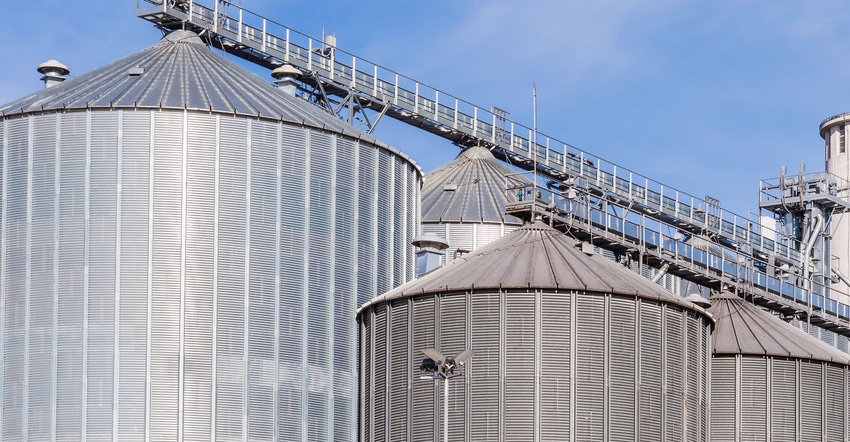
Corn quality is suffering in Pennsylvania and that’s driving high basis in the local grain market.
“Lancaster County basis recently hit triple digits, 100 over. That’s the September contract. Especially for this time of year, that’s very high,” says Zach Harding, senior merchant with The Andersons Inc.
A check on the Farm Progress cash grain bids calculator shows local basis in Pennsylvania averaging anywhere from 65 to 70 cents, depending on the elevator. New-crop corn is anywhere from 20 cents to 40 cents over.
The Aug. 26 Pennsylvania Grain Bids Report from USDA shows local elevators paying anywhere from $3.70 to $4.03 a bushel for corn, on average, with some elevators going as high as $4.41 a bushel. The current futures market price is around $3.40 a bushel for September.
Grain basis is the difference between the price of a commodity in the local market subtracted from the price of the commodity in the futures market.
Basis is usually stronger in the months before harvest as the local crop hasn’t been harvested. But it’s strong this year in Pennsylvania because of the crop’s condition, Harding says.
Latest Crop Progress Reports
The latest USDA Crop Progress Report rated 46% of Pennsylvania corn as good or excellent, nearly 20 points below the national average. Another 30% of the crop is rated fair while 15% of the crop is rated poor.
Soybean basis is a little weaker, he says, because plants still have time to fill pods. He estimates that the average is around 10 cents over right now. The USDA report shows elevators paying anywhere between $8.54 and $8.83 a bushel right now. The current futures market price is $9.13 a bushel, indicating a negative basis.
The local corn basis in New York is averaging 50 to 60 cents over, more the result of a dwindling old-crop stock, he says. Indeed, the corn crop is rated much higher, with the Crop Progress Report showing 64% of the crop in New York either good or excellent, right around the national average. New-crop corn is 40 cents over right now, which Harding expects as the harvest season gets closer.
Soybeans in New York are rated 58% good or excellent, below the national average of 69%.
The derecho in Iowa, which is taking millions of bushels of corn off the market, has certainly affected futures prices, but it doesn’t have much of an effect on local basis, Harding says. That’s because most rail replacement from the Midwest — since the Northeast is a corn deficit region — comes from Ohio, Indiana and Michigan. The corn crop in Indiana and Michigan is holding up thus far, he says, but the corn crop in Ohio, rated 45 good or excellent, is struggling.
Depending on a farmer’s marketing plan, Harding says there’s a good opportunity to make some money if the crop is in good enough condition.
"We think this crop year is going to provide opportunities for both producers and consumers to price grain at profitable levels,” he says. “We like taking additional new-crop risk off the table. With these values we know that the producer is generally undersold for this crop.”
Corn futures prices are averaging $3.50 to $3.60 a bushel for new-crop corn while new-crop soybeans are averaging $9.25 to $9.35 for soybeans. Harding doesn’t expect those prices to change much before harvest.
“I think it's going to take a pretty significant change in overall demand structure to really break through those," he says. “If a farmer has space to store, we recommend looking at forward contracting opportunities in Jan.-Feb.-March and in June-July. For bushels that have to move right at harvest, we definitely like to have those sold ahead of time. Most grain merchandisers, including The Andersons, do not require a 5,000-bushel commitment to do this.”
Further south, corn and soybeans are looking good. The Crop Progress Report rates Maryland corn and 75% good or excellent and soybeans at 85% good or excellent. Delaware corn is rated 73% good or excellent and soybeans at 70% good or excellent.
Shannon Dill, ag Extension educator for University of Maryland Extension, says growers should be open all to options to get the price that exceeds cost of production.
Basis contracts, depending on the elevator, are an option. You can lock in the basis and wait on price. “Many of the grain dealers have begun offering programs like price averaging; while you don't get the highest price you also don’t get the lowest. The other option is that many growers put in orders in case the market hits a certain price,” she says. “Forward contracting grain at a price that is above your cost of production is a good thing. You never know what markets will do.
“My advice would be to know your cost of production so you can make good decisions on price. Know your average yield expectation and decide based on the number of bushels you expect to price a percentage of them. Maybe it is a quarter of production, a third or half that you decide to forward contract.”
About the Author(s)
You May Also Like






